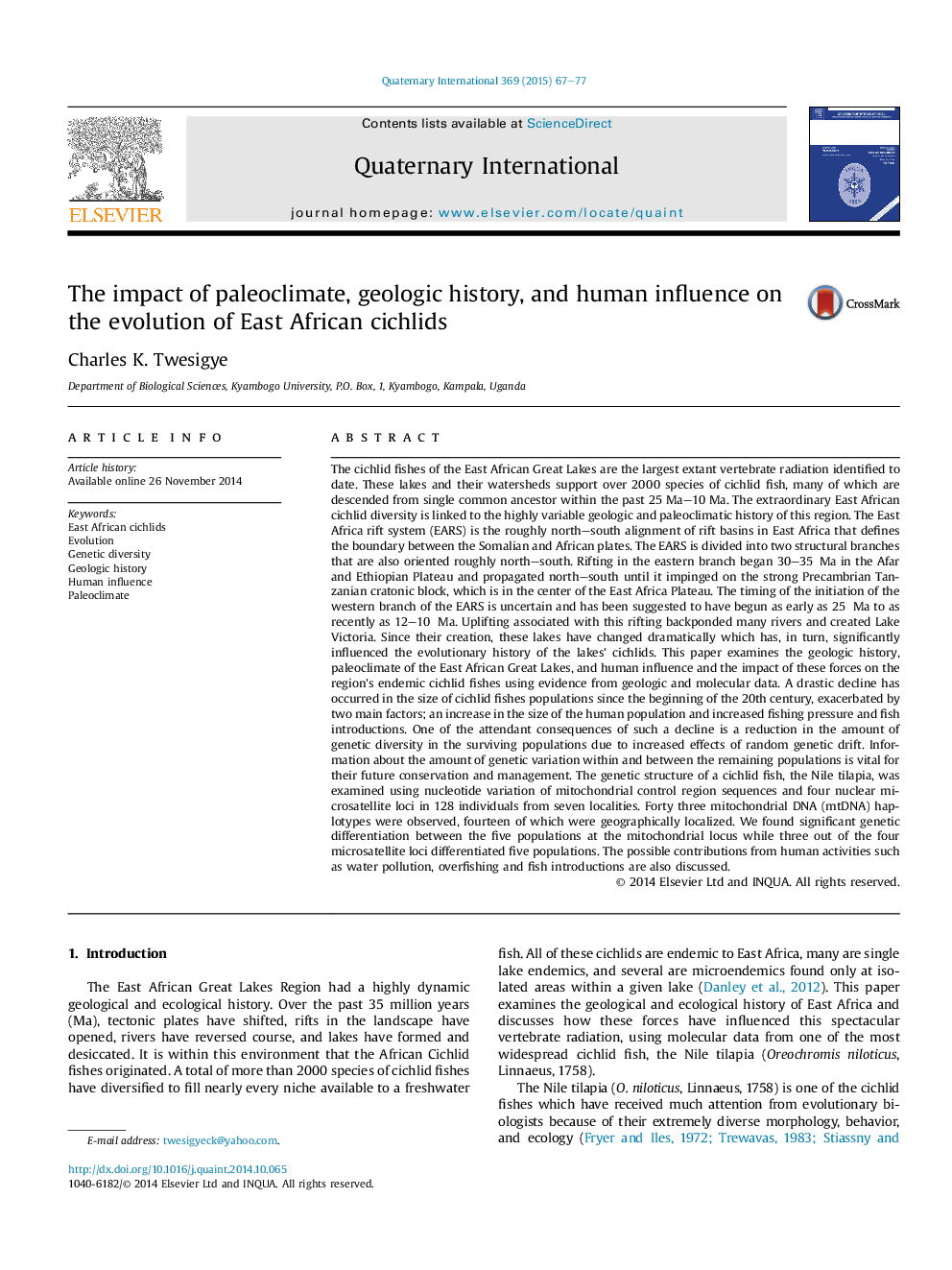| کد مقاله | کد نشریه | سال انتشار | مقاله انگلیسی | نسخه تمام متن |
|---|---|---|---|---|
| 1040810 | 1484128 | 2015 | 11 صفحه PDF | دانلود رایگان |
The cichlid fishes of the East African Great Lakes are the largest extant vertebrate radiation identified to date. These lakes and their watersheds support over 2000 species of cichlid fish, many of which are descended from single common ancestor within the past 25 Ma–10 Ma. The extraordinary East African cichlid diversity is linked to the highly variable geologic and paleoclimatic history of this region. The East Africa rift system (EARS) is the roughly north–south alignment of rift basins in East Africa that defines the boundary between the Somalian and African plates. The EARS is divided into two structural branches that are also oriented roughly north–south. Rifting in the eastern branch began 30–35 Ma in the Afar and Ethiopian Plateau and propagated north–south until it impinged on the strong Precambrian Tanzanian cratonic block, which is in the center of the East Africa Plateau. The timing of the initiation of the western branch of the EARS is uncertain and has been suggested to have begun as early as 25 Ma to as recently as 12–10 Ma. Uplifting associated with this rifting backponded many rivers and created Lake Victoria. Since their creation, these lakes have changed dramatically which has, in turn, significantly influenced the evolutionary history of the lakes' cichlids. This paper examines the geologic history, paleoclimate of the East African Great Lakes, and human influence and the impact of these forces on the region's endemic cichlid fishes using evidence from geologic and molecular data. A drastic decline has occurred in the size of cichlid fishes populations since the beginning of the 20th century, exacerbated by two main factors; an increase in the size of the human population and increased fishing pressure and fish introductions. One of the attendant consequences of such a decline is a reduction in the amount of genetic diversity in the surviving populations due to increased effects of random genetic drift. Information about the amount of genetic variation within and between the remaining populations is vital for their future conservation and management. The genetic structure of a cichlid fish, the Nile tilapia, was examined using nucleotide variation of mitochondrial control region sequences and four nuclear microsatellite loci in 128 individuals from seven localities. Forty three mitochondrial DNA (mtDNA) haplotypes were observed, fourteen of which were geographically localized. We found significant genetic differentiation between the five populations at the mitochondrial locus while three out of the four microsatellite loci differentiated five populations. The possible contributions from human activities such as water pollution, overfishing and fish introductions are also discussed.
Journal: Quaternary International - Volume 369, 22 May 2015, Pages 67–77
